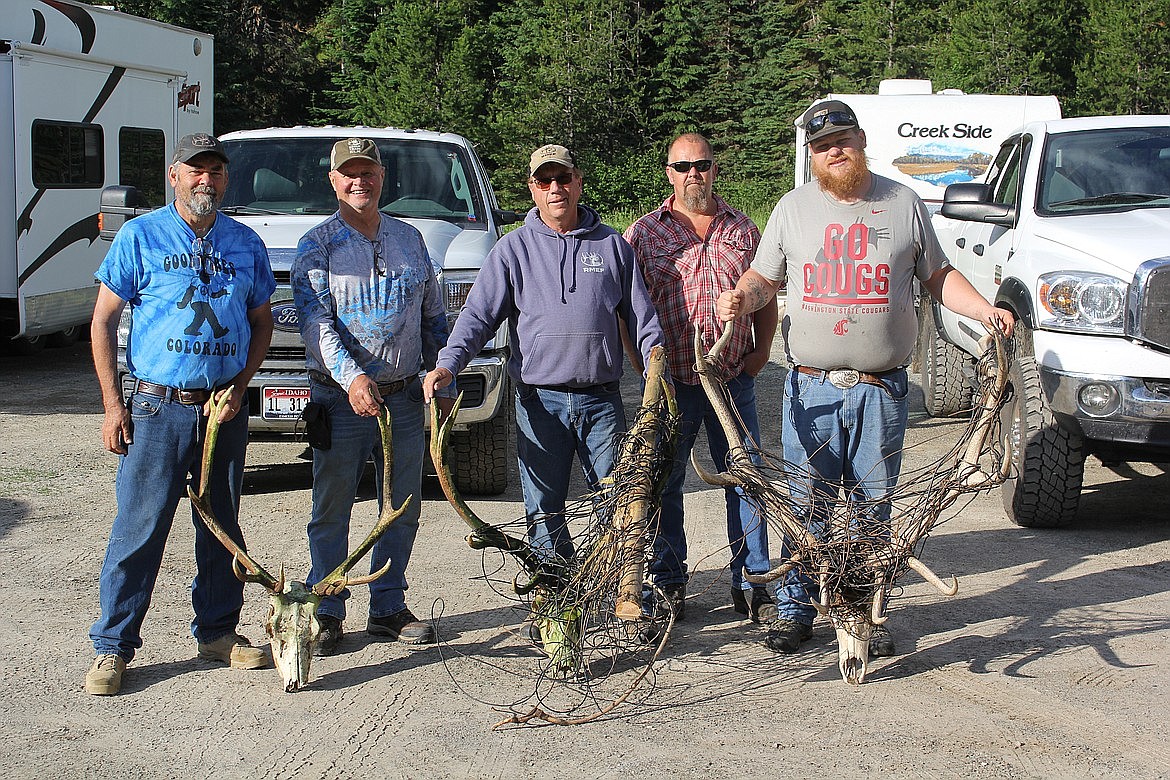Hunters help clear abandoned wire in Montana elk country
Plastics are destroying aquatic life in the oceans. Wind turbines are killing bats and birds that fly into them. And vacated wire is causing slow, painful deaths for elk on the Idaho-Montana state line.
When the Milwaukee railroad permanently abandoned operations, the company left an awful lot of gear behind. Not necessarily making a toxic site, but dangerous areas for wildlife.
Proof of this was discovered a few years ago when a couple of hunters found a bull elk that had starved to death after becoming tangled up in left over wire near Taft. It was not barbed wire, but the electrical wire that was strung up high on poles along the railroad that was never removed, and now hangs down from the still existing poles or is loose on the ground of the railroad beds.
Four years ago, a couple of elk hunters were scouting the Taft and Lookout Pass area preseason and found a bull elk that had died from being ensnarled in the electrical wire and brought it to the attention of the Rocky Mountain Elk Foundation, which is headquartered in Missoula.
That picture of the antlers entwined in wire become the poster child of what ignited members to become much more serious and involved in cleaning up the loose abandoned wire in elk country. This was a known problem but publishing that picture in the RMEF Bugle magazine kicked it into high gear across the chapters in the United States and Canada.
Wayne Brood lives in Moscow, Idaho and is the North Idaho Regional of the Rocky Mountain Elk Foundation and he and said that this was the third year that the RMEF has coordinated this wire-pull of the old railroad bed.
“After today, we still have about 10 miles of this railroad bed but there’s another railroad spur in there and we don’t know how much is along that one,” he said in the Taft parking lot recently as the volunteers were driving in for the second and last day of the project for 2023.
About 100 volunteers worked Thursday and the RMEF had a big barbecue for everyone to thank them for their hard work and Brood said about 80 were scheduled for Friday. The Forest Service had a crew working with the volunteers each day as the cleanup area is on Forest Service property. They also picked up wire coils and policed the area when the second day was completed.
The wire doesn’t have any copper so the only value it has is what a recycling center will give for it. And since there isn’t a value, it isn’t weighed or measured, but at the end of Thursday, one of the trucks with an 8-foot bed had sidewalls 4 feet above the railing top and the wire was stacked above that.
Brood explained that the first year the volunteers just coiled it as tightly as they could, but it was still very loose and took more vehicles to remove it. Last year they used a portable spooler which wraps wire tight as a drum and puts a heck of a lot more into each bundle. This year they had two spoolers.
Volunteers, on their own dime, came as far as Georgia, Arkansas, Michigan and Saskatchewan along with all of the western states as it was published and promoted in Bugle so people had ample time to plan. Jim Evans and Dean Radke drove from near Rochester, Minnesota to participate in the pull. Both are retired and new to elk hunting because they finally have time after hunting whitetails their entire lives.
“We saw it in 'Bugle' and thought it looked interesting and would make a fun little vacation for the two of us,” smiled Evans.
They agreed it has been a great adventure and will absolutely return.
“I’m bringing a couple of nephews that are 12 years old, as this is a perfect opportunity to help wildlife,” said Radke and Evans is bringing a couple of his grandchildren next year.
Joining his father on this project for his first time, Danial Brood shared what most people don’t know.
“I never knew there was wire like this up here. It’s amazing after watching the last couple years of what they have pulled out of here. It makes me wonder how many more (areas) are out there like this? How far do we have to go to take care of this?”
“We have several more years on this area alone”, Wayne Brood said. “Last year we probably did 2 miles and this year we’ll knock out about 3. Next year we’ll probably do this on the same week. The week of the Fourth of July,” he said.
Anyone with questions can call him at (208) 310-9584.


